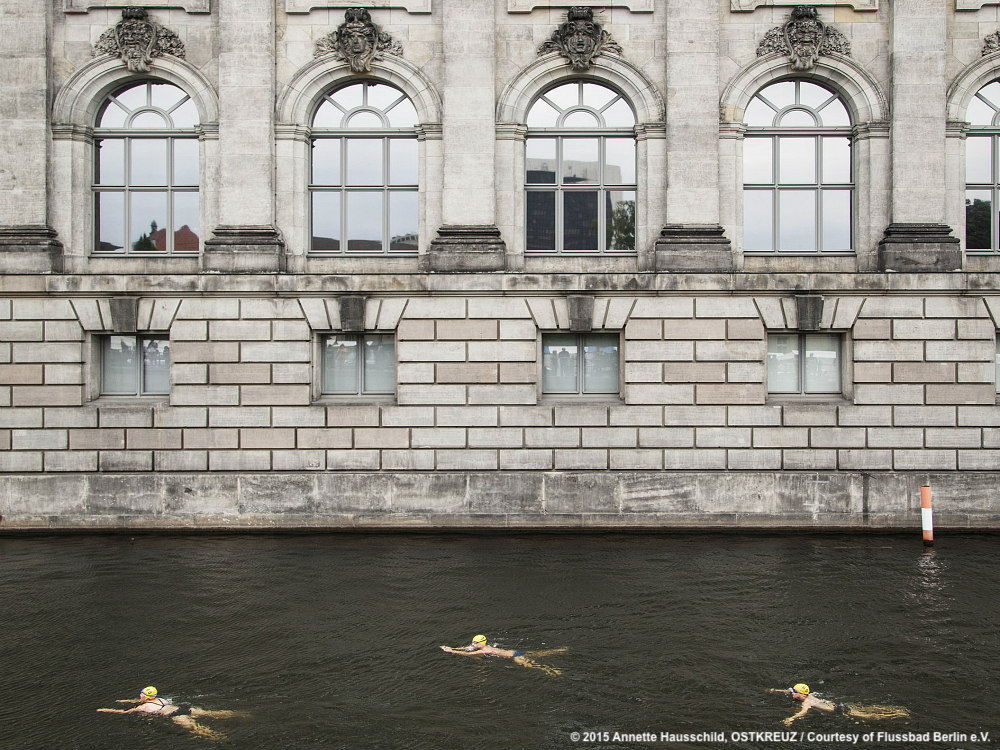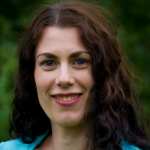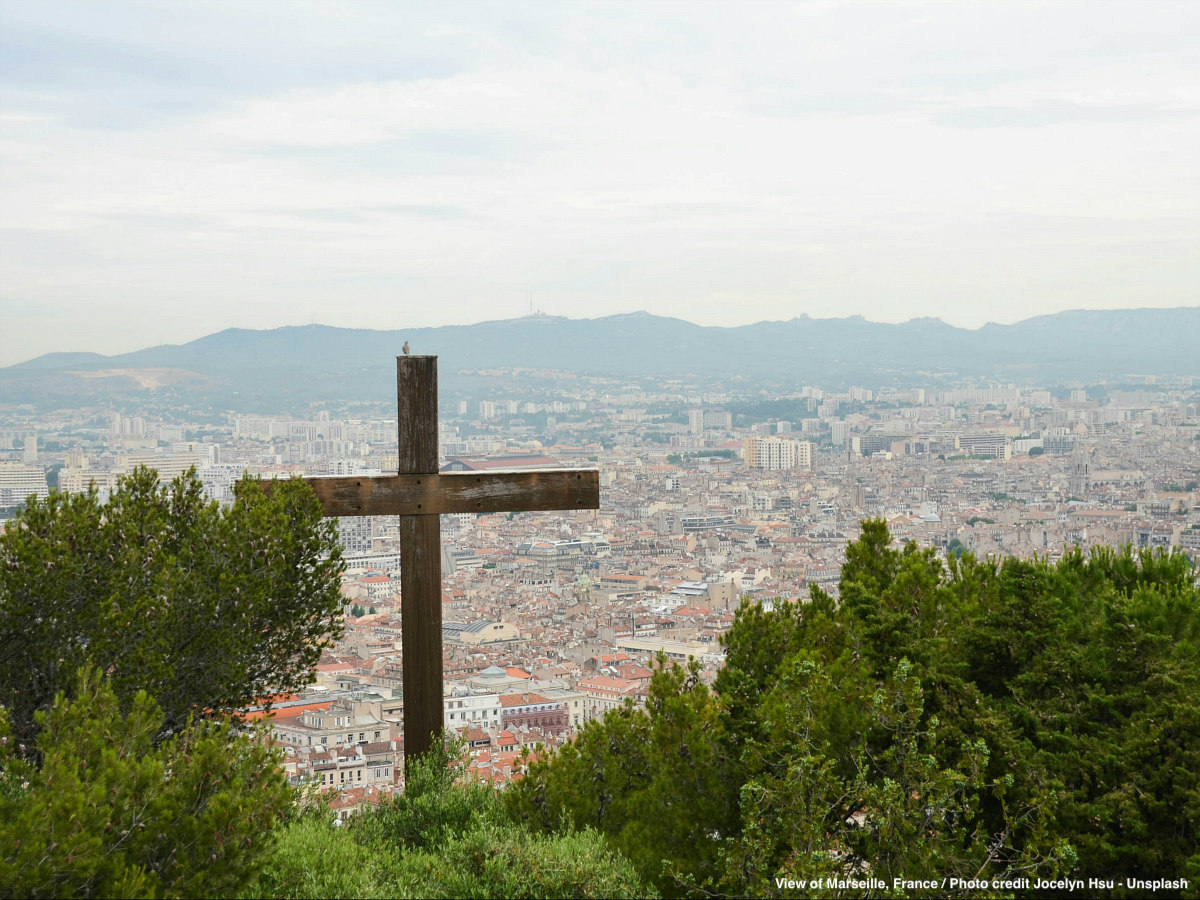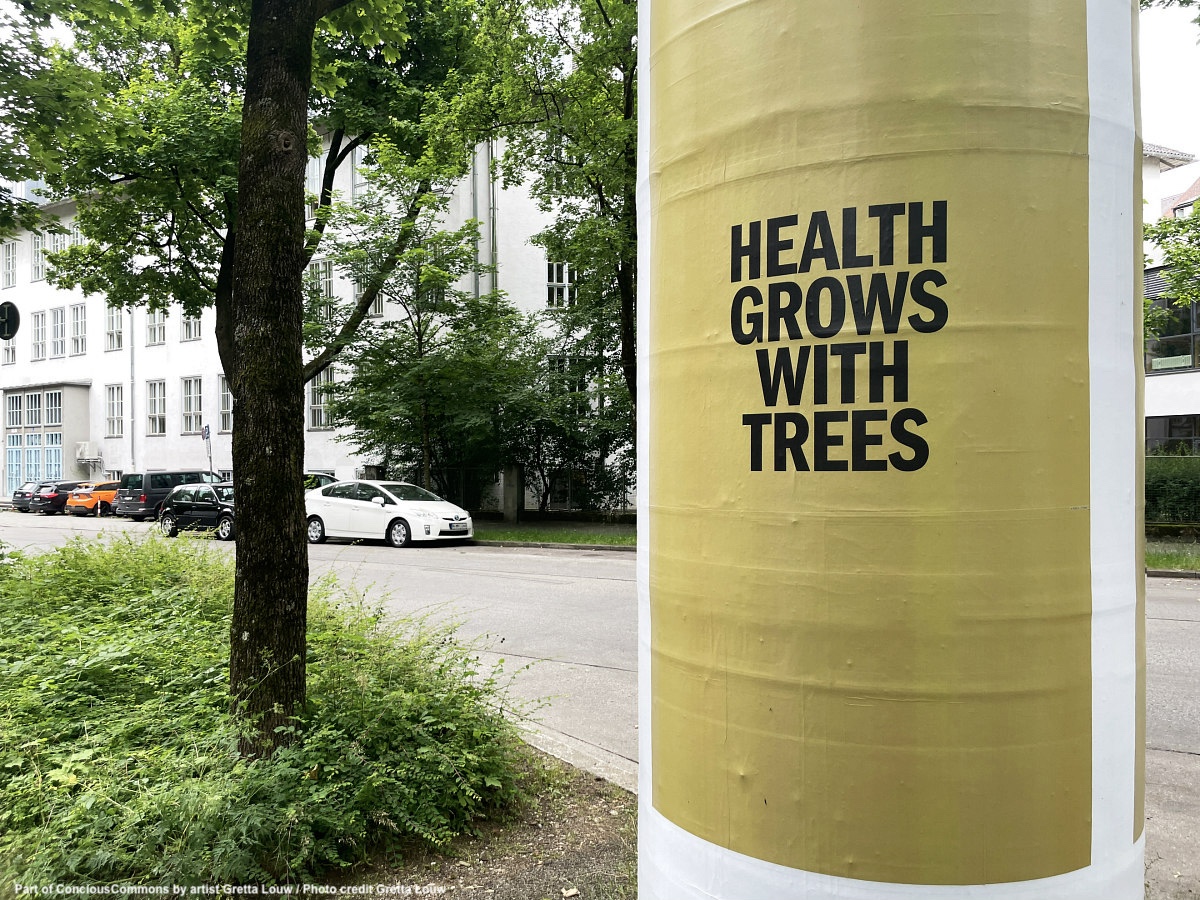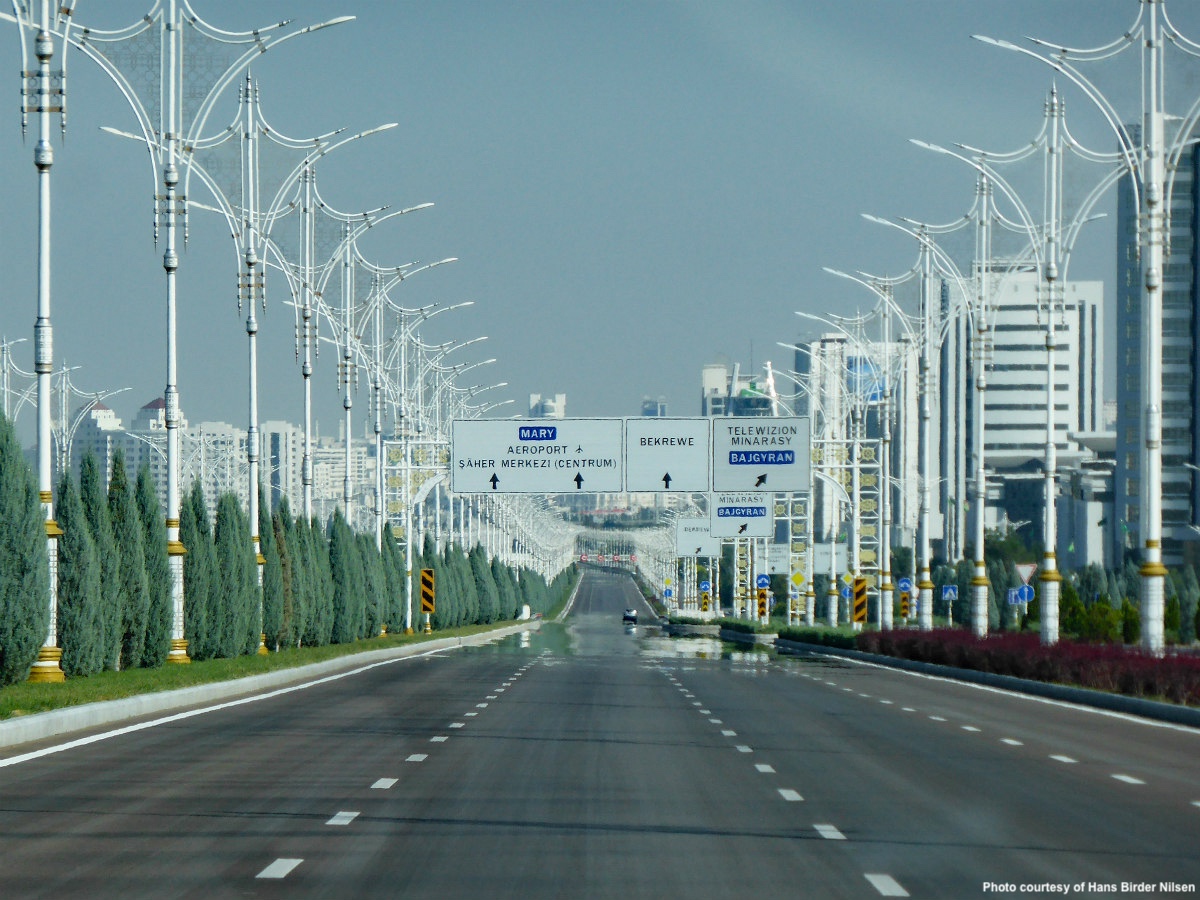A public area for swimming right in the centre of Berlin city – what sounds enticing to some, is highly contested by others. The idea of the revitalization of an urban river like the Spree canal in Berlin and its surroundings dates back to project plans from Jan and Tim Edler in the 1990s, even before the Museumsinsel was included on the List of UNESCO World Heritage in 1999. However, it took more than a decade and the win of the Lafarge Holcim Award in 2011/12 to start a broader initiative and to gain public recognition for the project idea.
Together with other supporters the two Edler brothers founded the Flussbad Berlin e.V. association in 2012 to raise public awareness and to encourage civic engagement in the implementation of the project. The following years brought negotiations with the city administration, modifications of the original plans along with a regular evaluation and contextualisation of the project in different media. Especially the association’s activities in the last years, such as the annual Berliner Flussbad Pokal, a temporary re-use of the Spree canal for a one-day swim event, or the Gartengespräche, a series of talks in the Flussbad garden, helped to create a broad public awareness for the revitalization of the river.
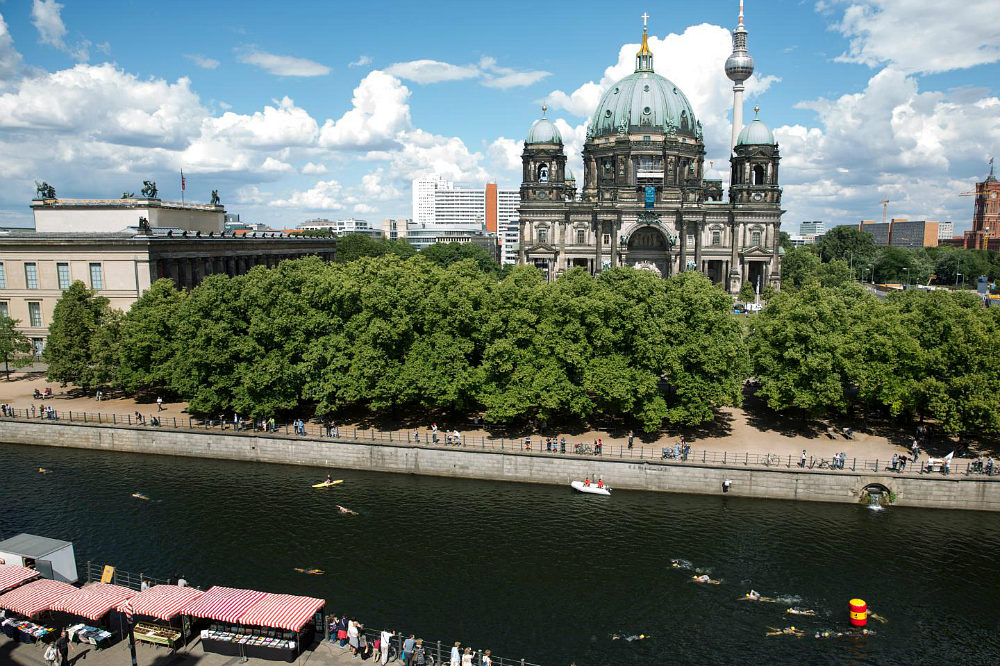
Since 2014 Flussbad Berlin e.V. has been financially supported by a federal urban planning program. This, together with the decision of the Berliner Senate to declare the Spree canal and its surroundings an urban development area in 2019, allowed further realisation of the project with the intention to open a first structural element of the FLUSS BAD in 2023. The planned staircase would provide the first access to the swimming area in the Spree canal. However, different legal requirements as well as conflicting interests and responsibilities complicate the implementation of the project so far.
When I heard of Flussbad Berlin e.V., I was wondering about the initiators’ motivation in their ongoing fight for the revitalization of an urban river. From my earlier research I was familiar with the contestation of urban heritage and the various interests connected to its interpretation, especially in a World Heritage area. However, those projects most often had been initiated by governmental institutions.
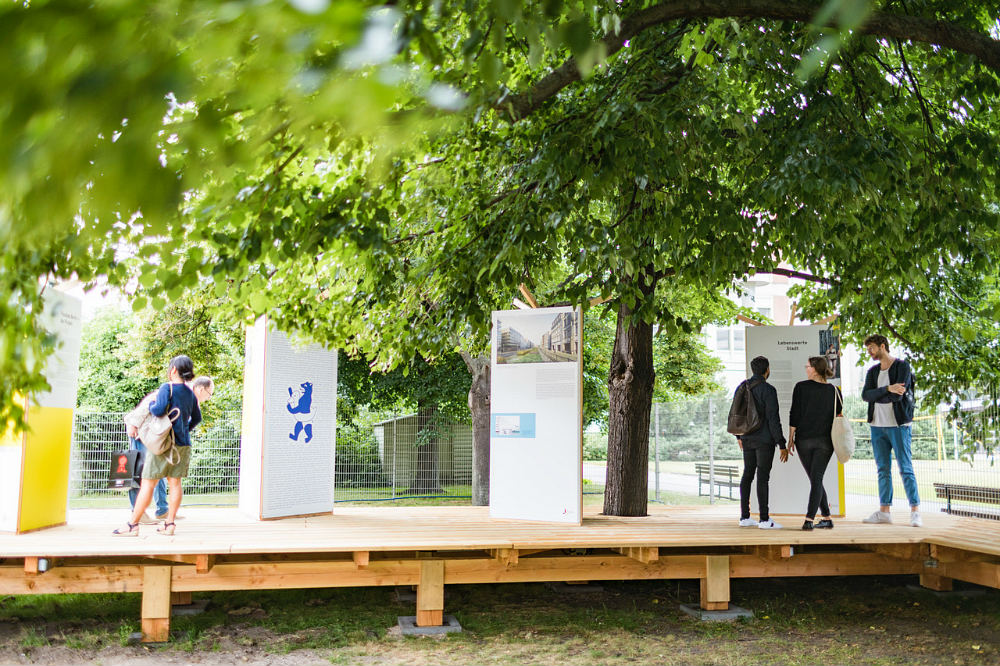
The contestation over heritage areas is generally described as a top-down process, sometimes challenged by single bottom-up initiatives. Such approaches reduce the complex interaction and interdependence of different stakeholders to a one-sided process and exclude perspectives on non-governmental planning projects such as the FLUSS BAD BERLIN.
As the implementation process of these projects show, contestation often occurs also between actors in a local context, between different national institutions, or in the case of a World Heritage site even in transnational meetings. The often-assumed dichotomy between beneficiaries (i.e. developers) and victims (i.e. residents) does not take into account the diverse interests and ideas which are negotiated in such projects.
But let’s have a look at the Berlin specifics: The proposed FLUSS BAD project lies in the core of Berlin’s historical centre, an ensemble internationally acknowledged (and promoted) by the inscription on the UNESCO World Heritage List. The area is not a residential district, but rather a representation of the city’s cultural heritage and therefore a space of contestation over different historical narratives. Identity claims are often connected to the production of certain heritage narratives that support entitlements over specific places. Here it is defined which or whose history becomes visible and will be remembered.
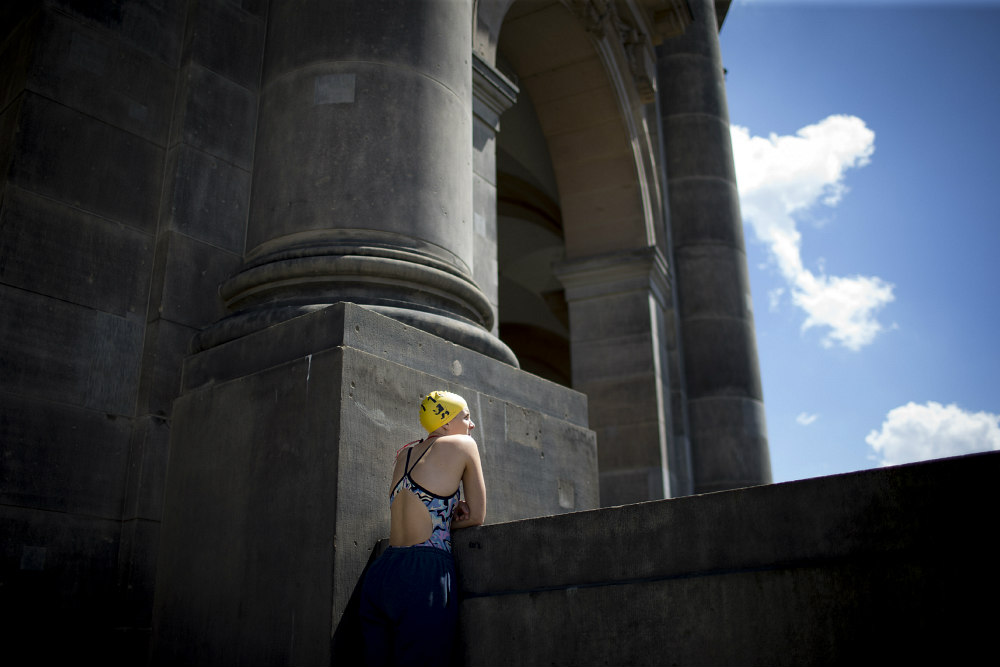
The idea of a swimming area within the context of the revitalization of an urban river, open to the public – including not only tourists or selected Berlin residents but all the people – challenges the distinct character of the Museumsinsel as an exclusive cultural space. How can the two important concepts in heritage management, the authenticity and the integrity of the place (both being important criteria for an inscription and positive evaluation as a World Heritage site as well), being guaranteed when Flussbad Berlin e.V. invites people to spend their leisure time with swimming, relaxing and thereby possibly disrupting the beauty of the area?
Of course, there have been several modifications in the ensemble of the Museumsinsel over time, for example the recently opened Humboldt Forum (a reconstruction of the Berliner Schloss) or the ongoing renovations of the Pergamon Museum. However, these arrangements complement the historic ensemble rather than presenting an urban counter-narrative about who is allowed to participate in the creation of urban space.
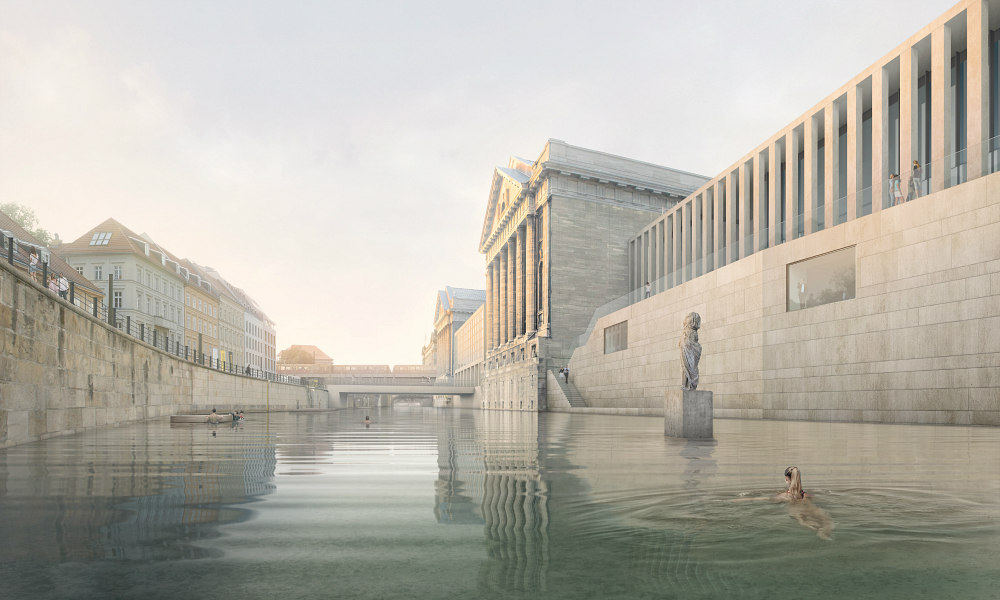
Developing a different vision of Berlin’s centre does not mean that the Flussbad Berlin e.V. is disregarding the heritage preservation in the area or neglecting the historic value of the Museumsinsel. In contrast, the association made several modifications to the original project design in accordance with preservation regulations: the access of the planned FLUSS BAD has been decentralised; the buffer zone of the UNESCO site has been acknowledged and the water filters have been changed to allow the silhouette of the city to mirror in water. However, talking to Jan Edler, he emphasises the importance of a vivid and dynamic city centre where people can meet and regain access to the city’s water resources.
It is important to create a vivid and dynamic city centre where people can meet and regain access to the city’s water resources. Water has an outstanding meaning as an asset in cultural history, Jan Edler says.
He emphasises the potential of re-interpreting the Spree canal not only as a natural but also a cultural asset. For him and the other members of the Flussbad Berlin e.V. association the museumification of the Spree Island, which is advanced with extensions and rebuilding projects according to the Museumsinsel Master Plan since the 1990s, could be counterbalanced with a concept improving citizens’ quality of life in the area.
The idea of the FLUSS BAD BERLIN is not the implementation of a huge urban transformation project to create an exclusive space for some as it can be regularly observed in other historic centres. Instead, the revitalization of an urban river highlights the sustainable use of water as a natural resource. It seeks for the restoration of and the public access to an already existing space. The project aims at improving the water quality of the Spree canal with the usage of a special water filter which is currently tested and scientifically evaluated.
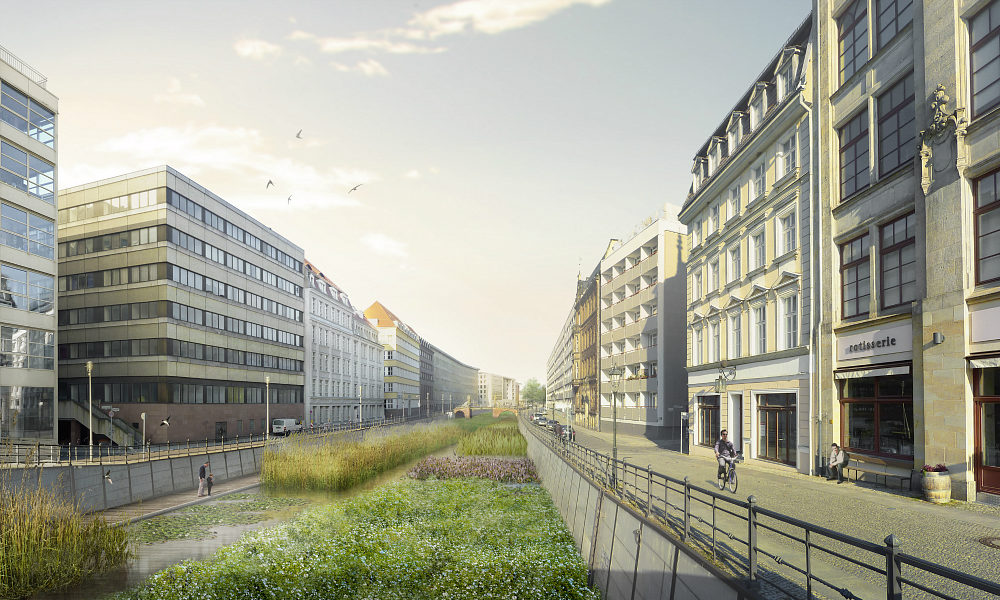
An improvement of the water quality could positively affect the revitalization of the ecosystem along the shores of the Spree. In this regard, the revitalization of this urban river could serve as a model of water purification in other inner-city districts as well. To exchange experiences and bring together ideas on such sustainable improvements is one reason why the association, as Jan Edler explained, seeks for cooperation and interaction with projects and actors in other cities.
Today the Flussbad Berlin e.V. association consists of around 500 members who are supporting the project in different ways. Many of them are living in Berlin, but people from all over the world are engaged in the project. However, the composition of supporters is not as heterogeneous as Jan Edler would wish it to be. Only few residents of the near-by neighbourhoods are actively involved in the FLUSS BAD BERLIN and younger people are hardly participating in the association’s diverse activities.
Urban development should involve the participation of young generations, who are increasingly interested in shaping their cities, claims Jan Edler.
This, in his opinion, would be important as these people could create the future of the city where they will live in. And here, again, it becomes obvious that the Flussbad Berlin e.V. association’s intention is about much more than the provision of a public swimming-area: It opens the ground for negotiations about what and who the centre of a city should represent. Its aim is the creation of a meeting point for different people and ideas, not in conflict but in coexistence with (or even as an extension of) historic narrations presented on the Museumsinsel.
